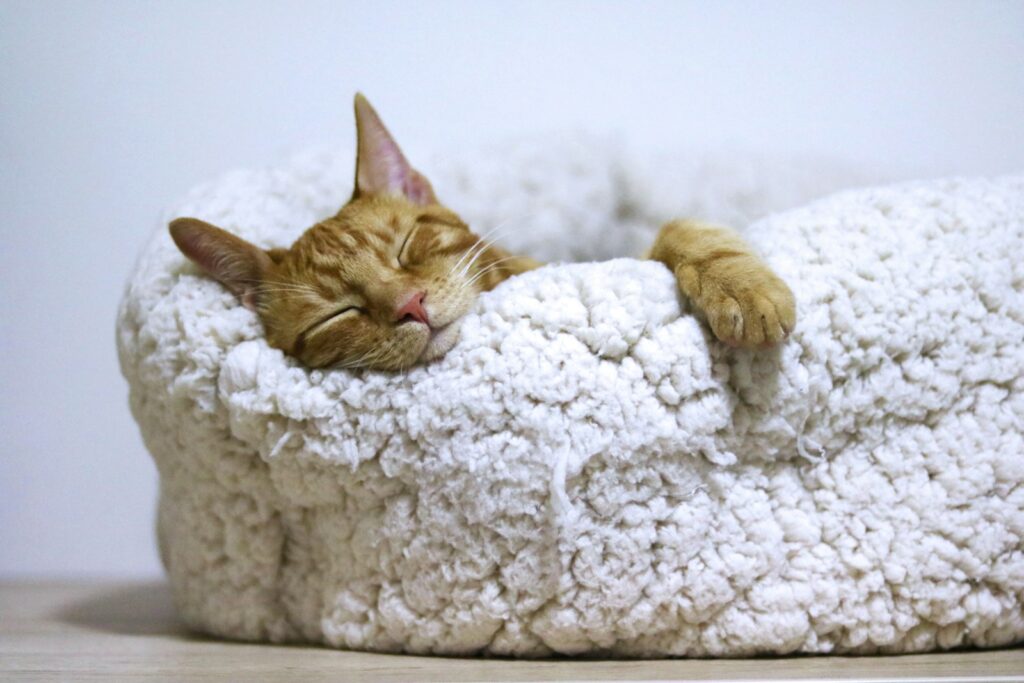Key Takeaways
- Strategic rest is an active, deliberate practice, not mere idleness. It’s intentionally stepping away from demanding tasks to allow the mind and body to recover, consolidate information, and generate new insights.
- Integrating rest profoundly boosts productivity and creativity. Far from being a luxury, strategic breaks lead to enhanced focus, better decision-making, superior problem-solving, and a significant reduction in burnout risk.
- Rest comes in many forms, beyond just sleep. From micro-breaks and digital detoxes to engaging hobbies and time in nature, diverse forms of recovery are crucial for holistic well-being and sustained high performance.
- Overcoming the “guilt of idleness” is essential for embracing strategic rest. Societal pressures often equate busyness with success, but learning to value and schedule downtime is a critical mindset shift for long-term health and achievement.
- Consistent, intentional strategic rest is a non-negotiable component of a sustainable, high-achieving life. It’s the secret ingredient that allows individuals to maintain peak physical and mental performance, unlock their full potential, and truly do everything by strategically doing nothing.
The modern world often feels like a relentless treadmill, a non-stop sprint where “busyness” has become a badge of honor and “always-on” is the default setting. We’re conditioned to believe that success is a direct result of ceaseless effort, long hours, and an unwavering commitment to the grind. Yet, amidst this glorification of perpetual motion, a quiet revolution is brewing – one that challenges the very foundations of our productivity paradigms.
What if the secret to achieving more, innovating faster, and living a more fulfilling life wasn’t about doing more, but about strategically doing less? What if the most powerful tool in your arsenal wasn’t another productivity hack or a more efficient workflow, but the profound, often overlooked, power of rest?
This isn’t about advocating for laziness or complacency. Far from it. This is about understanding “The Art of Strategic Rest: When Doing Nothing Does Everything.” It’s a deep dive into the deliberate, intentional pause – the kind of rest that isn’t just an absence of work, but an active, vital component of peak performance, creativity, and sustained well-being. We’ll explore why embracing strategic rest is not a luxury, but a non-negotiable strategy for anyone serious about long-term success, mental clarity, and genuine fulfillment. Prepare to redefine your relationship with downtime and unlock a new dimension of your potential.
The Illusion of Perpetual Motion: Why We’re Always “On”
Before we can truly appreciate the profound benefits of rest, we must first understand the pervasive culture that often discourages it. We live in an era where the lines between work and life have blurred, propelled by technology and a deeply ingrained societal narrative.
The Hustle Culture & Its Pitfalls
The rise of “hustle culture” has glorified overwork, long hours, and the relentless pursuit of goals at all costs. Social media feeds are filled with entrepreneurs touting their 18-hour days, while corporate ladders demand increasing commitments. This narrative often paints rest as a weakness, a sign of insufficient ambition, or a guilty pleasure to be squeezed in only when absolutely necessary.
- The Myth of More: We’re told that more hours equal more output. While initial effort is crucial, diminishing returns quickly set in. Beyond a certain point, additional hours often lead to lower quality work, more errors, and ultimately, burnout.
- The Glorification of Busyness: “I’m so busy” has become a common mantra, often delivered with a subtle hint of pride. It signifies importance, demand, and a packed schedule, often masking underlying stress and a lack of control.
- The Race to the Bottom: In competitive environments, individuals fear falling behind if they take a break, leading to a collective acceleration that benefits no one in the long run.
The Digital Overload: Always Connected, Never Disconnected
Our smartphones, laptops, and smart devices have become extensions of ourselves, blurring the boundaries between personal time and professional obligations. Notifications constantly vie for our attention, emails arrive at all hours, and the expectation of immediate responses has become the norm.
This constant connectivity, while offering unparalleled convenience, also creates an environment of perpetual partial attention. Our brains are constantly context-switching, unable to fully disengage and truly rest. The lines between “on” and “off” become indistinguishable, leading to:
- Cognitive Fatigue: The sheer volume of information and constant switching taxes our cognitive resources.
- Reduced Deep Work: The ability to focus intensely on a single task for extended periods, crucial for complex problem-solving and creative endeavors, is severely undermined.
- Difficulty Sleeping: The blue light from screens and the stimulating nature of digital content interfere with melatonin production and disrupt sleep cycles.
The Fear of Missing Out (FOMO) and the Fear of Doing Nothing
Adding to the pressure is FOMO – the anxiety that we might miss out on opportunities, experiences, or vital information if we step away. This fear keeps us tethered to our devices and our work, even when our minds and bodies are screaming for a pause.
Equally potent, and often less acknowledged, is the “fear of doing nothing.” For many, being idle triggers discomfort, a sense of guilt, or even an existential dread. We’ve been so deeply programmed to equate self-worth with productivity that true stillness can feel alien and unproductive. This internal resistance is a significant hurdle to embracing the importance of rest.
Understanding these cultural and psychological pressures is the first step towards breaking free and consciously choosing to prioritize strategic rest. It’s about recognizing that our current pace is unsustainable and often counterproductive.
What is Strategic Rest, Really? Defining the Deliberate Pause
The concept of “rest” is often misunderstood. It’s not simply the absence of work or a lazy indulgence. Strategic rest is a conscious, deliberate practice of stepping away from demanding tasks to facilitate mental and physical recovery, leading to enhanced performance and well-being. It’s about intelligently managing your energy, not just your time.
Distinguishing Rest from Idleness
This is a critical distinction. Idleness often implies a lack of purpose or direction – simply zoning out without intention. Strategic rest, however, is a proactive choice, a scheduled part of your strategy for success.
| Feature | Idleness | Strategic Rest |
|---|---|---|
| Intention | Lack of purpose, passive escape | Deliberate recovery, performance enhancement |
| Outcome | Can lead to guilt, wasted time | Recharge, creativity, improved focus |
| Energy | Can drain energy through passive consumption | Restores and optimizes energy levels |
| Engagement | Often passive (e.g., endless scrolling) | Can be active (e.g., a walk) or truly disengaged |
| Mindset | Reactive, undirected | Proactive, purposeful |
The goal isn’t to be inactive, but to engage in activities (or non-activities) that genuinely rejuvenate your mind and body. This is where doing nothing for success truly begins.
The Science Behind the Pause: Brain Waves and Cognitive Function
Our brains operate in different modes, each with its own benefits. Understanding these modes is key to appreciating why mental breaks for productivity are so powerful.
- Focused Mode: This is when you’re actively concentrating on a task, analyzing data, solving a specific problem. It’s effortful and requires high attention.
- Diffuse Mode: This mode is engaged when your mind is relaxed, wandering, or doing something unrelated to the problem at hand. It’s during this diffuse mode that creative connections are made, complex problems are mulled over subconsciously, and new insights emerge. It’s when you have “aha!” moments in the shower or on a walk.
Strategic rest deliberately activates the diffuse mode, allowing your brain to process information in the background, consolidate learning, and make novel associations that focused work often inhibits. It’s akin to how a computer performs background tasks or defragments its hard drive when not actively in use.
“The brain is like a muscle. When you use it intensely, it gets tired. Strategic rest allows it to recover and rebuild, leading to stronger connections and better performance.” – Dr. Amishi Jha, Neuroscientist, University of Miami
The Spectrum of Rest: From Micro-Breaks to Deep Disengagement
Rest isn’t a monolithic concept. It exists on a spectrum, with different types offering unique benefits.
- Micro-Breaks: Short pauses (5-15 minutes) integrated into work blocks. Think Pomodoro Technique breaks, stretching, or a quick walk.
- Active Recovery: Engaging in gentle physical activity like yoga, walking, or light stretching that aids physical recovery and performance without intense exertion.
- Mind-Wandering/Diffuse Thinking: Activities that allow your mind to roam freely, such as staring out a window, doodling, or simply daydreaming.
- Digital Detoxes: Intentional periods away from screens and digital notifications to reduce cognitive load and reconnect with the present.
- Nature Exposure: Spending time in green spaces, which has been scientifically proven to reduce stress and improve cognitive function.
- Hobbies & Play: Engaging in activities purely for enjoyment, leading to “flow states” where time seems to disappear, offering deep mental refreshment.
- Deep Disengagement: True periods of disconnecting from work and responsibilities, like vacations, weekends dedicated to leisure, or extensive personal time.
- Sleep: The foundational form of rest, essential for memory consolidation, physical repair, and emotional regulation.
Understanding this spectrum allows us to tailor our rest strategies to our specific needs, ensuring we get the right kind of rest at the right time.
Beyond Exhaustion: How Strategic Rest Fuels Peak Performance
Now, let’s dive into the core of why strategic rest is not just beneficial, but absolutely crucial for anyone seeking sustained excellence. The benefits of rest extend far beyond simply feeling less tired; they fundamentally enhance every aspect of our cognitive, emotional, and physical capabilities.
Enhanced Creativity and Problem Solving
One of the most profound impacts of strategic rest is its ability to unlock creative breakthroughs. When we’re constantly focused on a problem, our minds often get stuck in a particular way of thinking. Stepping away allows the diffuse mode of thinking to take over, making novel connections between seemingly unrelated ideas.
- Incubation Effect: Many famous discoveries and artistic inspirations have come during moments of rest or distraction. Think Archimedes’ “Eureka!” in the bath, or Paul McCartney dreaming the melody for “Yesterday.”
- Cognitive Flexibility: Rest allows your brain to reset, making it more adaptable and less prone to rigid thinking. This flexibility is vital for tackling complex, ambiguous problems.
“Creativity is not something you ‘try’ to do; it’s something that happens when your mind is relaxed and open to new connections. Strategic rest is the fertile ground for innovation.” – Unknown Creative Director
Improved Decision-Making and Focus
Fatigue, whether mental or physical, significantly impairs our ability to make sound decisions. When we’re tired, our prefrontal cortex – the part of the brain responsible for executive functions like planning, impulse control, and critical thinking – operates at a reduced capacity.
Mental breaks for productivity help restore this crucial cognitive horsepower. A rested mind can:
- Process Information More Effectively: You can weigh pros and cons more clearly and consider long-term implications.
- Avoid Decision Fatigue: The more decisions we make, the more fatigued we become, leading to shortcuts, impulsivity, or avoidance. Regular breaks mitigate this.
- Sustain Attention: Brief periods of rest, even just a few minutes, have been shown to significantly improve sustained attention on demanding tasks.
Consider the contrast in decision-making quality:
| State of Mind | Decision-Making Tendencies | Outcome Risks |
|---|---|---|
| Fatigued | Impulsive, risk-averse or overly risky, poor foresight | Errors, regret, missed opportunities, short-term focus |
| Rested | Deliberate, balanced, considers long-term impact | Optimal choices, innovative solutions, strategic advantage |
This highlights the critical role of productivity through rest.
Boosted Memory and Learning Consolidation
Sleep is perhaps the most obvious form of rest linked to memory, but even waking breaks play a role. During deep sleep and periods of quiet rest, the brain actively consolidates memories, transferring information from short-term to long-term storage.
- Synaptic Pruning: While resting, the brain prunes unnecessary neural connections and strengthens important ones, optimizing its learning capacity.
- Information Processing: Downtime allows the brain to process and integrate new information, making it more accessible and useful later. If you’ve ever felt like you “slept on” a problem and woke up with a solution, you’ve experienced this phenomenon.
Ignoring the importance of rest is like trying to fill a bucket with a hole in it – you keep pouring in new information, but much of it simply leaks away.
Stress Reduction and Emotional Regulation
Chronic stress is a silent killer of productivity and well-being. It elevates cortisol levels, impairs cognitive function, and can lead to a host of physical and mental health problems. Strategic rest is a powerful antidote.
- Cortisol Reduction: Taking breaks, especially those involving relaxation or enjoyable activities, helps lower stress hormones.
- Emotional Resilience: Rested individuals are better equipped to handle emotional challenges, manage frustrations, and respond thoughtfully rather than react impulsively. The ability to pause and regulate emotions is a hallmark of strong leadership and interpersonal skills.
- Perspective Shift: Stepping away from a stressful situation, even for a short time, can provide a much-needed perspective, allowing you to approach the problem with a calmer and more rational mindset.
According to Harvard Health, regular relaxation and mindfulness practices, which are forms of strategic rest, can significantly reduce the physical and psychological symptoms of stress and anxiety, improving overall health and mental acuity. Learn more about the benefits of relaxation.
Preventing Burnout and Sustaining Long-Term Productivity
Burnout is not just feeling tired; it’s a state of emotional, physical, and mental exhaustion caused by prolonged or excessive stress. It leads to reduced productivity, cynicism, and a loss of personal efficacy. The only true cure for burnout is sustained rest and recovery.
Strategic rest acts as a preventative measure, a continuous re-calibration that allows you to sustain high levels of productivity through rest over the long haul. It’s about building resilience and ensuring your well-being isn’t sacrificed at the altar of short-term gains. Think of it as preventative maintenance for your most valuable asset: yourself.
Physical Recovery and Performance
While often discussed in the context of mental faculties, the importance of rest extends profoundly to physical health and performance.
- Muscle Repair and Growth: During rest, especially sleep, the body repairs muscle tissue damaged during physical activity. Growth hormone is released, facilitating cell regeneration.
- Energy Restoration: Glycogen stores, the body’s primary fuel source, are replenished.
- Immune System Boost: Chronic fatigue weakens the immune system, making you more susceptible to illness. Adequate rest strengthens your body’s defenses.
- Reduced Injury Risk: Fatigue impairs coordination, reaction time, and decision-making, increasing the likelihood of accidents and injuries, whether in sports or daily life.
For athletes, periods of recovery and performance are explicitly scheduled into training plans. What applies to physical prowess is equally true for mental and creative endeavors. You cannot continuously perform at your peak without dedicated time for recovery.
From Theory to Practice: Integrating Strategic Rest into Your Daily Routine
Understanding the immense value of strategic rest is one thing; consistently integrating it into our busy lives is another. Here’s how to translate the theory into tangible, actionable strategies that empower you to do nothing for success.
Micro-Breaks: The Power of the Pomodoro and Beyond
Micro-breaks are short, intentional pauses woven throughout your workday. They prevent cognitive fatigue, maintain focus, and offer small windows for the diffuse mode to activate.
- The Pomodoro Technique: Work for 25 minutes, then take a 5-minute break. After four “pomodoros,” take a longer 15-30 minute break. This structured approach is incredibly effective for sustained focus.
- Stand and Stretch: Simply standing up, stretching, and moving your body for 2-3 minutes can dramatically refresh your mind.
- Hydrate: Step away to grab a glass of water. It forces a small physical break and keeps you hydrated, which is crucial for cognitive function.
- Window Gazing: Look away from your screen and out a window. Let your eyes unfocus and your mind wander for a minute.
- Listen to a Single Song: Put on a favorite, calming tune and just listen, without doing anything else.
These small, frequent mental breaks for productivity accumulate, making a significant difference to your overall energy and output.
Digital Detoxes: Reclaiming Your Attention
Our digital devices are constant sources of stimulation and distraction. Intentional digital detoxes are a powerful form of strategic rest.
Here are steps to implement a digital detox:
- Schedule Screen-Free Zones: Designate specific times of day (e.g., first hour of waking, last hour before bed) or days of the week (e.g., “Tech-Free Sundays”) as entirely screen-free.
- Turn Off Notifications: Silence non-essential notifications on your phone and computer to reduce constant interruptions.
- Charge Devices Outside the Bedroom: Prevent the temptation to scroll late at night or first thing in the morning.
- Delete Distracting Apps: Remove social media or news apps from your phone, accessing them only on a computer if necessary.
- Engage in Analog Activities: Replace screen time with reading a physical book, going for a walk, pursuing a hobby, or spending time with loved ones without devices.
These actions not only provide rest but also train your brain to regain control over your attention.
The Art of Deliberate Disengagement: Hobbies and “Flow” States
True rest often comes from engaging in activities that are completely separate from work, yet fully absorbing. Hobbies that lead to “flow states” – where you are completely immersed and time seems to disappear – are incredibly restorative.
- Creative Pursuits: Painting, playing a musical instrument, writing fiction, gardening, cooking, knitting.
- Physical Activities: Hiking, cycling, dancing, swimming (where the focus is on the activity itself, not external goals).
- Learning Something New: A language, a craft, a game – anything that engages your mind in a fresh, non-work-related way.
These activities provide deep mental refreshment by shifting your focus and engaging different parts of your brain, offering a profound form of recovery and performance.
Sleep Optimization: The Foundation of All Rest
No discussion of rest is complete without addressing sleep. It is the most fundamental and vital form of strategic rest. Neglecting sleep undermines all other efforts.
- Consistency is Key: Go to bed and wake up around the same time every day, even on weekends, to regulate your circadian rhythm.
- Create a Routine: Develop a relaxing pre-sleep ritual (e.g., warm bath, reading, gentle stretching) to signal to your body it’s time to wind down.
- Optimize Your Environment: Ensure your bedroom is dark, quiet, and cool.
- Mind Your Diet: Avoid caffeine and heavy meals close to bedtime.
- Limit Blue Light: Stop using screens at least an hour before bed.
For more in-depth guidance on improving your sleep, check out our comprehensive guide to sleep hygiene.
Nature’s Prescription: The Restorative Power of Green Spaces
Spending time in nature is a powerful form of strategic rest. Research consistently shows that exposure to natural environments can reduce stress, improve mood, and enhance cognitive function.
- Forest Bathing (Shinrin-Yoku): A Japanese practice of mindfully immersing yourself in a forest environment.
- Regular Walks: Take a daily walk in a park, along a tree-lined street, or any accessible green space.
- Bring Nature Indoors: Add plants to your workspace or home. Look out a window at natural scenes.
A study published by the journal Environmental Health Perspectives found that exposure to green spaces significantly reduces the risk of various health problems, including cardiovascular disease, type 2 diabetes, and premature death, while also improving mental well-being. Read the study here.
Mindful Movement: Exercise as Active Rest
While intense exercise needs its own recovery, gentle, mindful movement can be a form of active strategic rest. It helps release tension, improve circulation, and clear the mind.
- Yoga or Tai Chi: Focus on breath and movement, promoting relaxation and flexibility.
- Leisurely Walking: Not for speed or intense cardio, but for enjoyment and gentle activity.
- Stretching: Releases physical tension and improves blood flow.
This type of movement focuses on body awareness and gentle engagement, providing a different kind of break than purely sedentary activities.
Schedule Your Downtime: Treat Rest Like a Priority
The most critical step in embracing strategic rest is to treat it with the same seriousness as your most important appointments. Don’t wait until you’re exhausted to rest; proactively schedule it.
- Block Out Time: Use your calendar to block out dedicated time for breaks, hobbies, or simply “doing nothing.”
- Set Boundaries: Clearly define your work hours and stick to them. Communicate these boundaries to colleagues and clients.
- Automate Where Possible: Use tools and systems to streamline repetitive tasks, freeing up mental space and time for rest. For advice on streamlining your digital life, refer to our guide on digital productivity tools.
By making rest a non-negotiable part of your schedule, you transform it from an afterthought into a deliberate strategy for productivity through rest. This is truly doing nothing for success.
The Hurdles to Halting: Addressing Common Roadblocks
Even with a clear understanding of the benefits of rest and practical strategies, many individuals struggle to implement strategic rest. These roadblocks are often deeply ingrained psychological and societal challenges.
The Guilt of Idleness: Shifting Your Mindset
Perhaps the biggest hurdle is the pervasive guilt associated with doing nothing. We’re taught that idleness is unproductive, lazy, or even sinful. This guilt can sabotage even the best intentions for rest.
- Challenge the Narrative: Consciously question the belief that busyness equals worth. Remind yourself that rest is a productive activity, essential for optimal performance.
- Reframe Rest: Instead of viewing rest as an indulgence, reframe it as an investment in your mental, physical, and creative capital. It’s a key component of doing nothing for success.
- Start Small: Begin with short, intentional breaks. As you experience their positive effects, the guilt will naturally diminish.
Time Scarcity: Making Room for Recovery
“I don’t have time to rest” is a common lament. Our schedules feel packed, and adding another “task” like rest seems impossible.
- Prioritize ruthlessly: Recognize that rest isn’t an optional add-on but a fundamental pillar of sustained productivity. If you “don’t have time” for rest, you likely don’t have time for burnout, poor decision-making, or reduced creativity either.
- Audit Your Time: Track how you spend your time for a week. You might be surprised to find “time leaks” (e.g., excessive social media scrolling, unnecessary meetings) that could be repurposed for strategic rest.
- Batch Tasks: Group similar tasks together to reduce context-switching and create larger blocks of focused work, followed by more substantial breaks.
The Addiction to Busyness: Breaking the Cycle
For some, being busy becomes an addiction. It provides a sense of importance, keeps uncomfortable thoughts at bay, or offers an excuse for not pursuing deeper, more challenging goals.
- Mindfulness: Practice mindfulness to become aware of your urge to fill every moment. Observe the discomfort of stillness without judgment.
- Identify Underlying Fears: Is busyness a shield against deeper fears or anxieties? Addressing these root causes can free you from the constant need for activity.
- Find Alternative Sources of Validation: Shift your self-worth from external output to internal well-being and the quality of your contributions, not just the quantity of hours logged.
Overcoming these obstacles requires a conscious effort, a commitment to re-evaluating your values, and a belief that doing nothing for success is a powerful and valid path.
Building a Culture of Rest: Personal and Professional Transformation
Embracing strategic rest isn’t just a personal journey; it has profound implications for teams, organizations, and society at large. When individuals and institutions recognize the importance of rest, it fosters a healthier, more innovative, and ultimately more successful environment.
Leading by Example: Rest in Leadership
For strategic rest to truly take hold, it must be championed from the top. Leaders who openly prioritize their own recovery, schedule breaks, and encourage their teams to do the same send a powerful message.
- Normalize Breaks: Leaders can create a culture where taking a mid-day walk or disconnecting after hours is seen as a strength, not a weakness.
- Focus on Outcomes, Not Hours: Shift the emphasis from how long someone works to the quality and impact of their output.
- Provide Resources: Support flexible work arrangements, mental health resources, and opportunities for employee well-being, all of which facilitate rest.
When leaders model healthy rest habits, it gives others permission to do the same, fostering a virtuous cycle of productivity through rest.
Measuring Success Beyond Hours Worked
Our current metrics for success often heavily weigh hours spent and visible effort. To truly embrace strategic rest, we need to redefine what success looks like.
- Quality over Quantity: Focus on the quality of ideas, the efficiency of solutions, and the positive impact generated, rather than simply the volume of tasks completed.
- Innovation Metrics: How often are new ideas generated? How effectively are complex problems solved? These are outcomes often enhanced by periods of rest.
- Well-being Indices: Organizations can track employee engagement, satisfaction, and burnout rates as indicators of a healthy work culture that values recovery and performance.
This shift in measurement helps dismantle the “busyness is best” mentality and reinforces the value of working smarter, not just harder.
The Compound Effect of Consistent Recovery
Just as compound interest builds wealth over time, consistent, intentional strategic rest builds resilience, creativity, and sustained high performance. It’s not a one-time fix but a lifestyle choice with cumulative benefits.
- Cumulative Resilience: Each period of rest strengthens your capacity to handle future stressors.
- Enhanced Learning: Over time, consistent rest improves memory and learning consolidation, making you a more effective learner and problem-solver.
- Sustainable Innovation: A rested mind is a fertile ground for continuous innovation, preventing the creative burnout that often plagues fast-paced industries.
The long-term investment in strategic rest pays dividends that far outweigh the perceived “cost” of downtime. It’s the ultimate strategy for longevity in a demanding world.
Conclusion: The Unsung Hero of High Performance
We began by challenging the relentless “always-on” culture, and hopefully, by now, the paradox has become clear: in a world obsessed with doing more, the most profound secret to achieving everything might just be mastering the art of doing nothing. Strategic rest is not a passive surrender to fatigue; it is an active, intelligent, and absolutely essential component of peak performance, profound creativity, and enduring well-being.
We’ve explored the myriad benefits of rest, from enhanced problem-solving and memory consolidation to crucial stress reduction and physical recovery and performance. We’ve seen how integrating mental breaks for productivity, whether through micro-pauses or deep disengagement, isn’t a luxury but a strategic imperative. The importance of rest is undeniable, serving as the unsung hero that fuels our capacity to excel, innovate, and thrive without succumbing to burnout.
The journey to embracing strategic rest requires a shift in mindset, a willingness to challenge societal norms, and a commitment to prioritizing your most valuable asset: yourself. It’s about understanding that productivity through rest is not a myth but a scientifically validated pathway to sustained achievement. By intentionally stepping away, allowing your mind to wander, and giving your body the recovery it demands, you are not just recharging – you are recalibrating, re-engaging, and ultimately, unlocking a higher, more sustainable level of success. This is the profound power of doing nothing for success.
Embrace the Pause: Your Call to Strategic Rest
Are you ready to redefine your relationship with work and well-being? To stop seeing rest as a weakness and start recognizing it as your most powerful competitive advantage?
Take the first step today. Don’t wait until you’re exhausted.
Here’s your call to action:
- Schedule Your First Strategic Pause: Right now, open your calendar and block out 15-30 minutes for a deliberate break tomorrow. It could be a walk, some quiet reading, or simply staring out the window. Commit to it.
- Identify One Digital Habit to Change: Choose one digital habit (e.g., no phone in the bedroom, silence notifications for an hour) that you’ll adjust this week to create more mental space.
- Share Your Experience: What is your biggest challenge with taking rest? What small step will you take? Share your thoughts and strategies in the comments below. Let’s build a community that champions the power of the pause!
Remember, the path to sustained excellence is not through ceaseless toil, but through the intelligent integration of strategic rest. Start doing everything by deliberately doing nothing. Your future, more rested, more productive, and more creative self will thank you.











